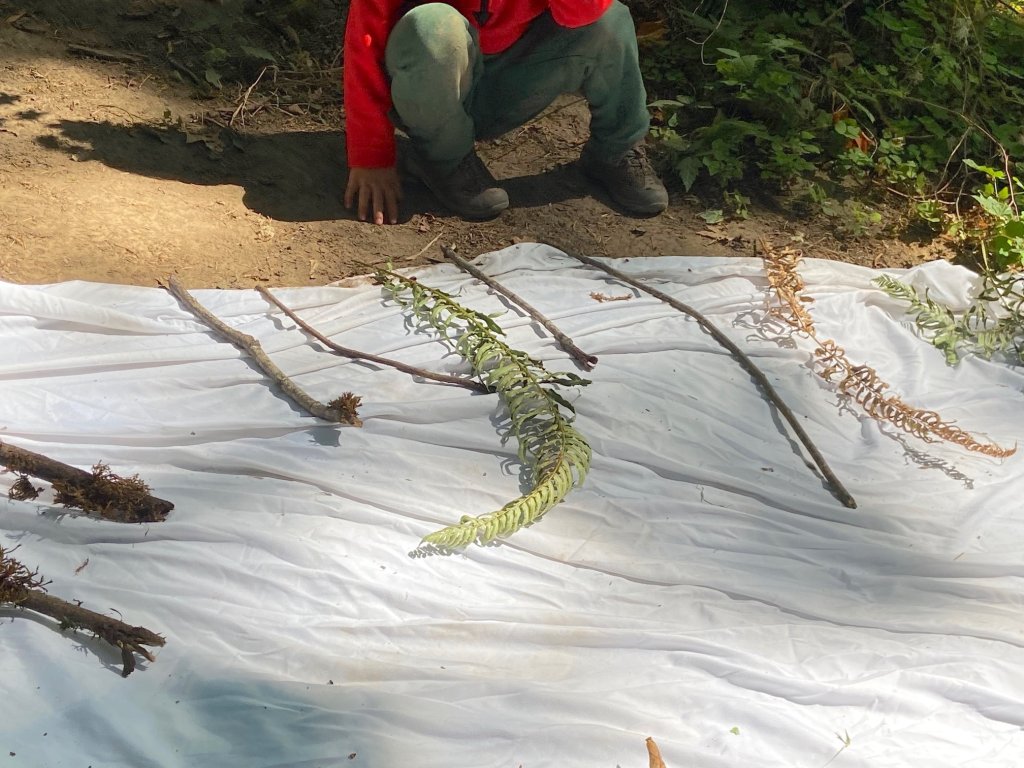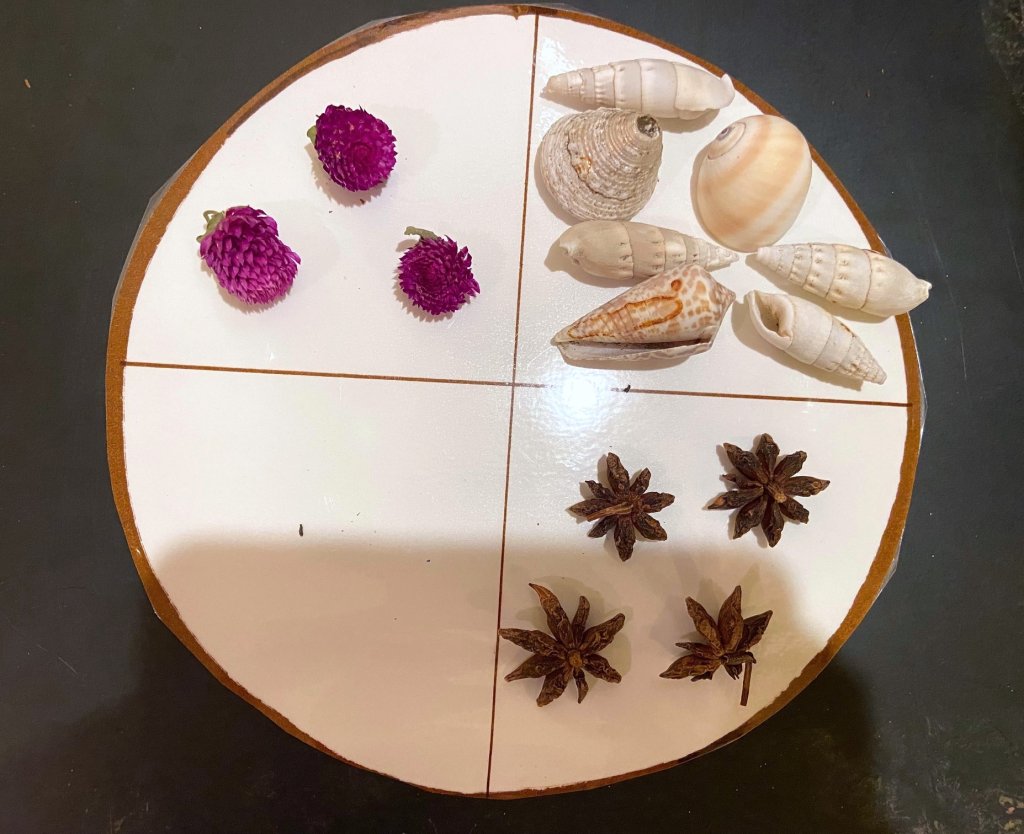Using Nature to Introduce Math in Preschool
Young children can learn about math concepts through activities rooted in exploring the outdoors.
Your content has been saved!
Go to My Saved Content.Math can sometimes feel like an abstract concept to teach to preschoolers: long sequences of numbers, complex graphs, division and multiplication symbols. In reality, math surrounds us. It’s in the spirals of a seashell, the concentric circles of flower petals, and the symmetry of a butterfly’s wings. We can use nature to make mathematical concepts concrete for young children.
Math is the way we order our world—sorting it into meaningful categories or recognizing patterns so that we can make predictions. We count and measure things to make sure that we have the quantities we need. Young children can use a math lens to understand the nature around them, which thereby provides a real-world application for concepts that might otherwise be abstract. For example, when young children count and divide shells equally among themselves, they apply hands-on numeracy skills to create a fair outcome.
Using natural objects develops children’s curiosity and encourages investigation. When children sort leaves, they must look closely at their characteristics and think about their functions. In this way, using natural materials for math can be a springboard into other curricular areas. Children may decide to investigate the science of why leaves are different colors or try to identify trees by the shapes of their leaves.
Natural materials are inexpensive, easy to come by, easily interchangeable, and, as long as they are intentionally collected, nontoxic for children and sustainable for the environment. The math ideas in this article can be performed using any set of natural objects.
Benefits of Learning in Nature
In addition to enhancing math skills, there are empirically proven benefits to exposing children to nature. A study reported in Frontiers in Psychology reported that it takes just 20 minutes outdoors to reduce stress hormones. Research out of the University of Illinois at Urbana-Champaign found that time outdoors reduces ADHD symptoms in children, improving attention and mental health. Professor Julie Ernst, at the University of Minnesota, Duluth, found that children who attend nature-based preschools are more creative and more likely to exhibit problem-solving behaviors than children enrolled in traditional preschools.
Moreover, while the greatest benefits occur from being outside in nature, children can still reap the benefits of any level of exposure to nature. In their book The Experience of Nature: A Psychological Perspective, researchers Rachel Kaplan and Stephen Kaplan found that simply being able to view a green space through a window provides mental and academic benefits.
Following a Framework for Teaching Nature-Based Preschool Math
A basic framework for teaching nature-based math involves sourcing natural materials, deciding what to teach using a child-centered lens, and then pairing the natural materials with classroom tools that will assist children in their learning goals.
Sourcing materials: I recommend enlisting children’s help to gather the natural materials. Children are motivated to learn about things they collect in a space that is meaningful to them. You can collect objects from the schoolyard or from a nearby forest or park, go on a field trip, or request that families send in natural items they find at home. The objects can be all one kind, like a set of different feathers, or they can be a mixed set of various natural items—pebbles, shells, twigs, leaves, and flowers together in a basket. Almost any small object you gather outside can be repurposed as a math manipulative.
Follow the children’s interests: In deciding what to teach, you’ll want to have flexibility to follow the children’s lead. If you’re outside, all you need is a white bedsheet to spread on the ground. The sheet mimics a white sheet of paper but allows young children to build life-sized patterns, graphs, and sequences with natural materials. When children are older and ready for pencil-and-paper math, the mathematical frameworks they encounter on paper will already be familiar from the hands-on versions they built in preschool.
I always have the white sheet with me so that I’m ready to respond to children’s mathematical queries. One day, while I was reading a story to a group of preschoolers, a child kept interrupting the story to show me a fabulous stick he had found. I promised that I would hunt for more fabulous sticks with him after I finished reading the story.
Before our stick hunt, I spread out our white sheet to use as a sorting mat. Most of the other preschoolers joined the stick hunt, and we started placing the sticks in short and long piles. We could have easily sorted by other characteristics, such as thickness, type of tree they came from, whether or not they were covered with moss, or whether they were rough or smooth. After we had collected a lot of sticks, we talked about which pile had more sticks. Afterward, some of the children ordered the sticks by size. Another group of children used the already sorted sticks to create patterns.

There’s no limit to the math topics that can be covered using sticks and a white sheet. On other days, the children’s interest might lead to conversations about greater than/less than, estimating quantities, counting and other number sense activities, one-to-one matching, graphing the already sorted sticks, using the sticks as units of nonstandard measurement, or building two- and three-dimensional shapes. When we don’t have access to sticks or when other natural items catch our eyes, we take advantage of whatever natural loose materials the location provides. The process remains the same.
Pairing natural materials with classroom tools: Bringing natural manipulatives inside can also be an effective way of setting up math investigations for children. I recommend keeping sorted baskets of natural items on a shelf. You can add interest and spur investigations by pairing the natural loose parts with classroom tools that most preschool teachers already have. For example, you can add sorting trays, rulers, balances, mirrors, or ten frames to a basket of shells, depending on what your preschoolers need to practice.

The most flexible classroom tool for natural math I’ve found is a simple pie plate or pizza box divided into four equal sections. We set these plates in our mud kitchen or dramatic play area for children to cook up some math fun. When children use small natural loose parts like flower petals, acorns, or pine cones to decorate their pies, it is a chance to talk about math concepts like symmetry and patterns. Just as the white bedsheet mimics a piece of paper, the divided plate or box mimics a pie chart, but life-sized and ready for the children to create. It is perfect for exploring concepts of “more or less” or for introducing fractions while remaining open-ended for creative play.
Math doesn’t need to be abstract or taught by rote. By harnessing the beauty of math in nature, teachers can motivate preschoolers to learn through meaningful, hands-on exploration.
